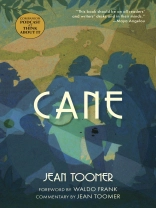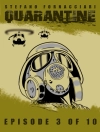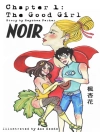First published in 1923, Cane is a significant work of Modernist fiction and a literary Goliath of the Harlem Renaissance. In this wholly original novel Jean Toomer highlights issues of class and caste in a three-part pastiche of poems, vignettes, and play-like stories. The audacious, non-traditional structure of the book reflects the prismatic nature of the material itself. Toomer’s close observations during a stint as school principal in Sparta, Georgia, primarily informed what Houston A. Baker, Jr. calls a ‘mysterious brand of Southern psychological realism that has been matched only in the best work of William Faulkner.’ This edition includes Jean Toomer’s essay, ‘The Crock of Problems, ‘ in which the author discusses race in America and his own diverse ethnic heritage, and an extensive biographical note.
Tabla de materias
Contents
Foreword
Karintha
Reapers
November Cotton Flower
Becky
Face
Cotton Song
Carma
Song of the Son
Georgia Dusk
Fern
Nullo
Evening Song
Esther
Conversion
Portrait in Georgia
Blood-Burning Moon
Seventh Street
Rhobert
Avey
Beehive
Storm Ending
Theater
Her Lips Are Copper Wire
Calling Jesus
Box Seat
Prayer
Harvest Song
Bona and Paul
Kabnis
The Crock of Problems
About Jean Toomer
Sobre el autor
Jean Toomer (1894-1967) was born in Washington, D.C., the son of Nathan Toomer and Nina Elizabeth Pinchback, both of whom were of white and black heritage. After graduating from the highly regarded all-black M Street School he traveled extensively and attended six institutions of higher education studying agriculture, fitness, biology, sociology, and history. Although he never completed a degree, his wide readings among prominent contemporary poets and writers, and the lectures he attended during his college years, shaped the direction of his writing. From his earliest writings, Toomer insisted on being identified only as American. With ancestry among seven ethnic and national groups, he gained experience in both white and non-white societies, and resisted being classified as a Negro writer. He grudgingly allowed the publisher of Cane to use that term, but wrote to his publisher, Horace Liveright, ‘My racial composition and my position in the world are realities that I alone may determine.’ Although he wrote prolifically after the publication of Cane, he ceased public literary endeavors from 1950 until his death in 1967.











